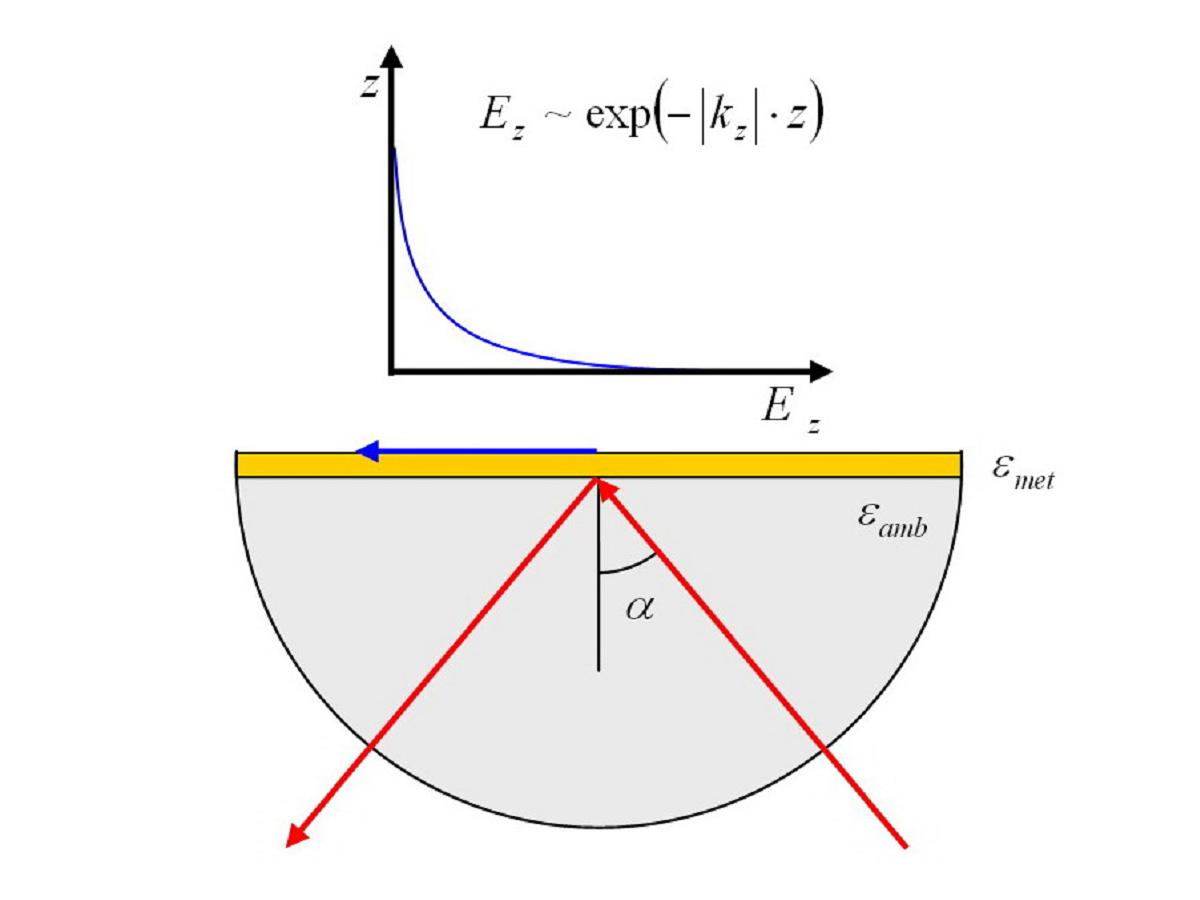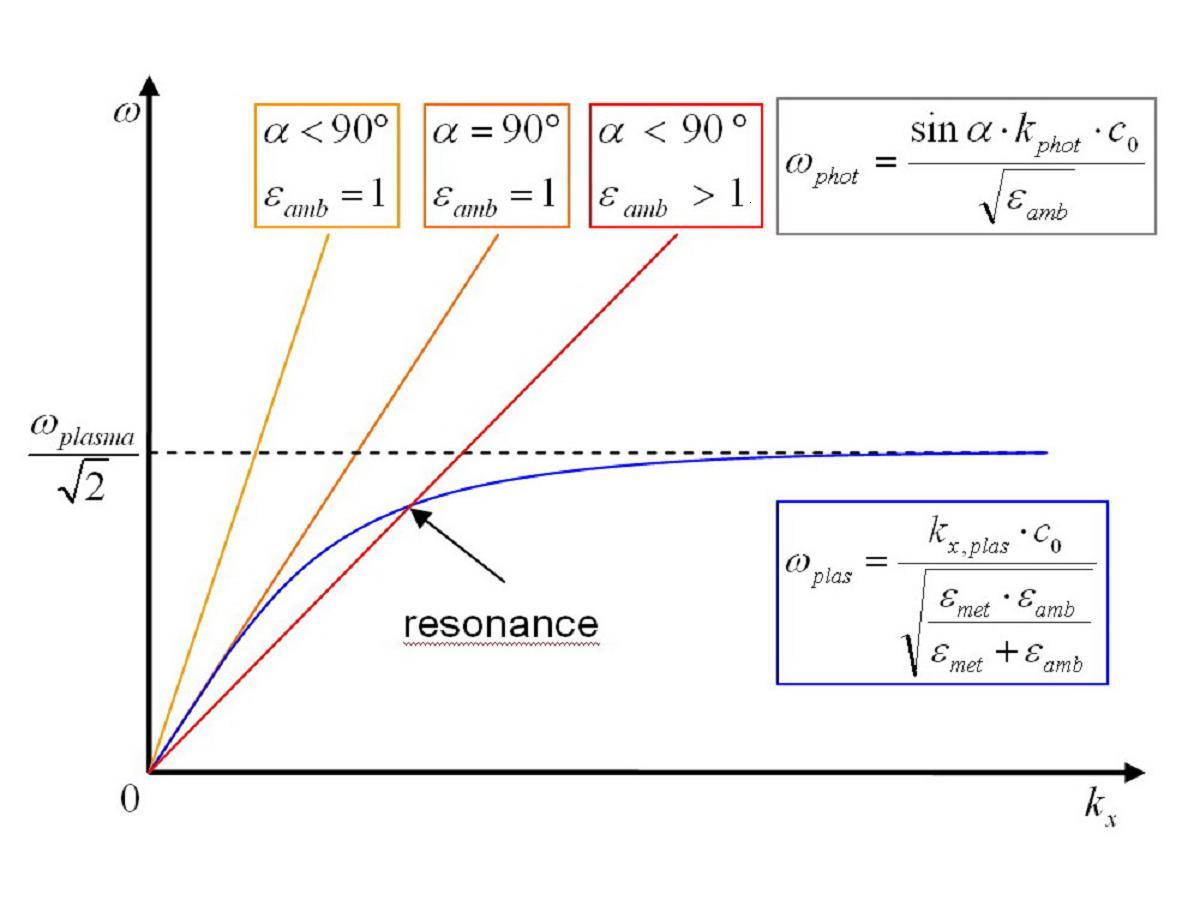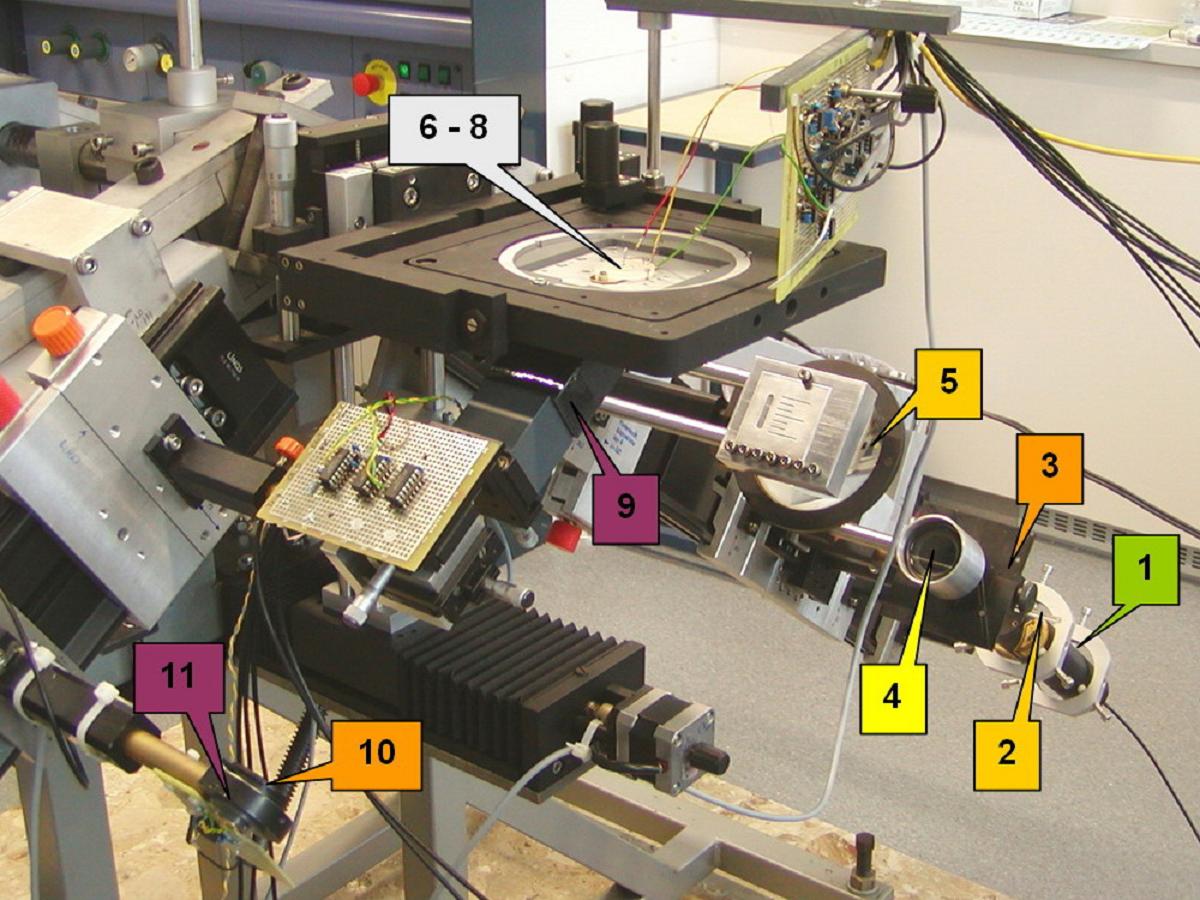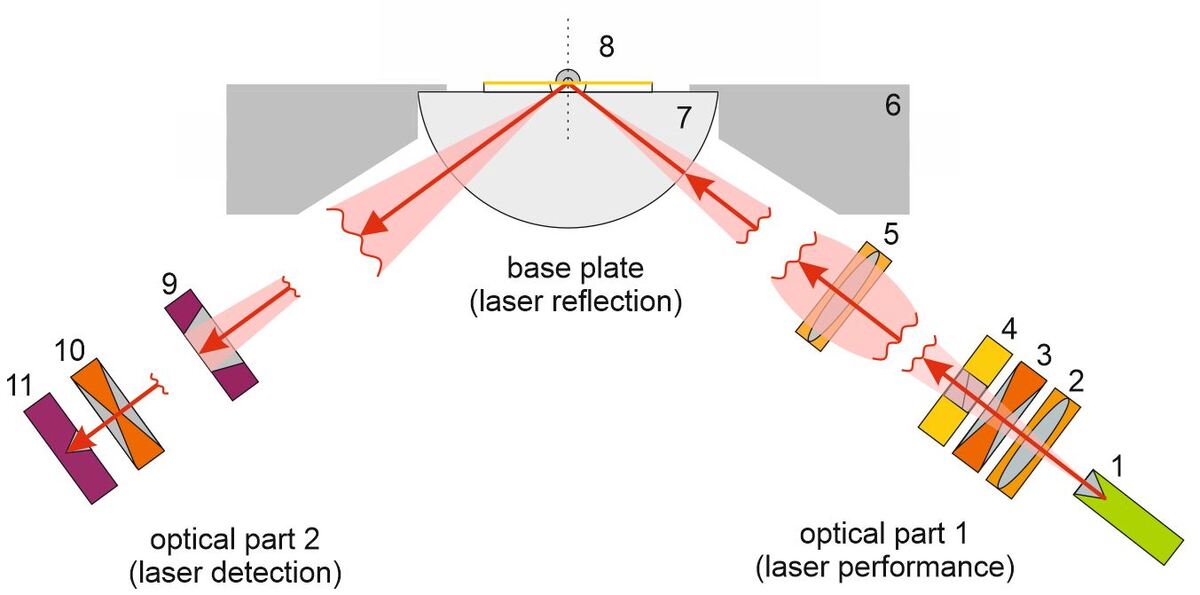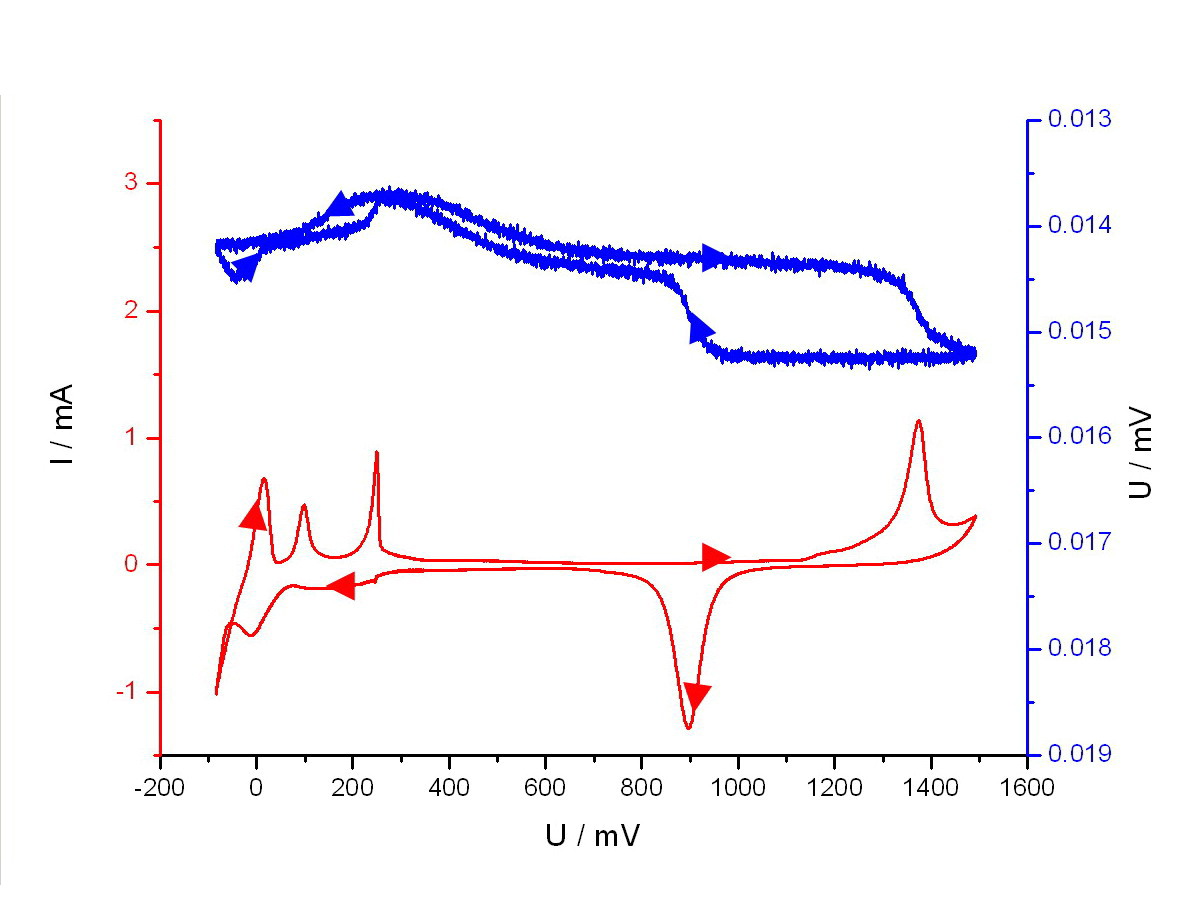Surface plasmon resonance (SPR)
-
Plasma vibrations are periodic oscillations of free electrons in conductors. As electromagnetic waves they are quantized and the corresponding quasiparticles are the so called plasmons. Surface plasmons propagate on an interface, e.g. between a metal (solid) and a dielectric (liquid or gaseous). They contain a transversal oscillation component, hence they can be excited by light under well-defined optical conditions. The characteristics of these surface plasmons are highly sensitive to modifications of these interfaces, e.g. by adsorption of atoms or molecules. We developed an experimental set up to measure with millisecond time resolution and use this technique for in situ electrochemical processes.
According Kretschmann´s configuration, surface plasmons can be excited at the surface of thin gold films of about 50 nm thickness evaporated on top of a hemispherical cylinder (► fig. 1) [1]. The schematic diagram displays a laser beam (red) is going through a hemispherical cylinder (grey) where it is totally reflected by a thin metallic film (yellow) on its top. Thereby an evanescent wave is generated, which propagates parallel to the glass-metal-interface (blue) and which decreases exponentially to that interface (z-direction).
This coupling device allows to fulfill both the conservation of energy and the momentum as can be seen in the dispersion relations of photons and surface plasmons (► fig. 2). The illustration in Fig. 2 shows photons going through the media vacuum (resp. air) and may reach the surface with any angle of incidence α < 90° (yellow) or propagate parallel to it (α = 90°, orange). In both cases no surface plasmons will be excited by reason that a common intersection between both curves is missing, but by changing through a media with εamb > 1(red) the case of resonance could be fulfilled.
In a typical surface plasmon resonance experiment the reflected laser intensity is measured as a function of the angle of incidence. Under ideal conditions (optimal film thickness, ideal polarization of the laser beam, no interferences etc.) the reflected laser intensity drops to zero as the surface plasmons are generated. The shape of the reflection curve (inclusive the angle of incidence, where resonance appears) is highly sensitive to the nature of the gold interface on which surface plasmons are excited.
We developed an experimental set up to measure the entire reflection curve with millisecond time resolution (► fig. 3 and 4) and use this technique for in situ electrochemical processes employing the gold film as a working electrode. This is presented in fig. 6, which shows the simultaneous recording of the cyclic voltammogram and the plasmon signal. The surface plasmon signal was taken at a constant angle of incidence at the maximum slope of the plasmon curve (► fig. 5).
[1] E. Kretschmann, Zeitschrift für Physik A Hadrons and Nuclei 1971, 241, 313.

